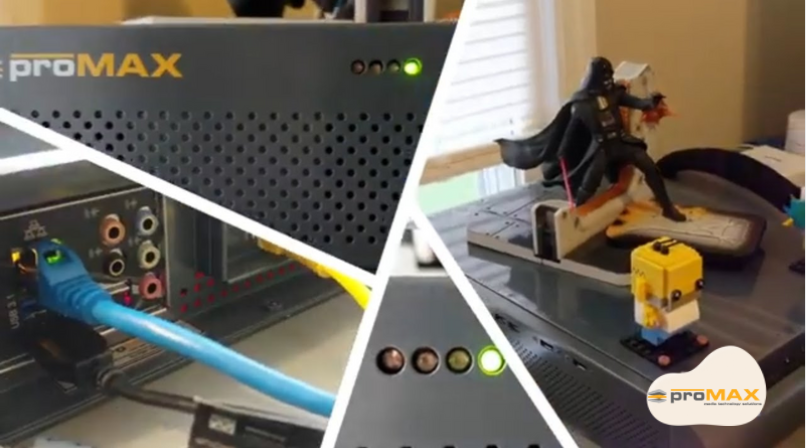
Shared storage is the buzzword these days.
With the rise of technology, almost every business needs a way to store and share data. For instance, video-editing and post-production teams have to handle a great deal of file-sharing activities. If they don’t have the right tools such as shared storage, copy-pasting raw footage from one device to another will consume epic proportions of time.
If you wonder what shared storage options are and how they elevate your business processes, keep reading.
What are Shared Storage Options?
Shared storage is a common space used by multiple computers or users for storing their files, especially ones of high quality and large size. Consider this being done right would really be memory management saving time and money. Everything in shared storage is accessible to various people simultaneously as it is all available in a centralized pool similar to what Google Play does for consumer users. There are few types of shared storage:
- NAS - Network Attached Storage(NAS) is a server with built-in storage space. Nas requires internet connectivity as well as a local area network(LAN). There is a requirement for multiple hard drives, and they should have a RAID configuration. Nas gives you control of all the files stored in it. You can set permissions and replicate data so that you have a backup. Nas only has one drawback. Because of its complicated nature, NAS is not fast enough compared to the other alternatives available in the field. The scalability perspective is minimal on NAS shared storage solutions.
- SAN - Storage Area Network(SAN) is where data is moved into disk arrays with the help of a network controller and metadata controller. This is a high-speed network with network access which is block-level. Logical disk Units (LUNs) consist of a set of blocks from a pool of shared systems. SAN controls two-thirds of the shared storage market. They are resilient and highly available as they are designed to remove single points of failure. If well-designed, SANs can withstand multiple device failures making them very reliable. However, they have a complex infrastructure that includes hosts, switches, storage devices, and elements. A variety of topologies and technologies are used in it, and the storage spans across multiple locations.
- RAID- Redundant Array of Independent Disks(RAID) is a collection of hard drives. SAN and NAS devices also use RAID for storing the data across several disks. In case you have four hard drives, and two are replicated with the same data. Then you choose to keep both of them in separate locations. Even if the data is not entirely copied in RAID configuration, you are not losing all your data with it if one drive fails.
Among these solutions, SAN is expensive and very complex to set up on your own. However, it is also one of the most used storage solutions that increase utilization and effectiveness by providing tiered storage and consolidated storage resources.

To deal with your team-specific post-production requirement, shared storage is the best option. It will also help your team access files required at any point of the day without being physically present with the team. SAN is the best option if you are running a team of several hundred VFX artists. For small teams, RAID is a well-suited option. At the same time, NAS is an option that gives you a lot more flexibility.
Moving your post-production activities to shared storage enhances productivity and collaboration. Sharing saves money and time. The team will work faster than expected and make the work better.
Here’s a quick table comparing SAN and NAS head to head:
|
Features |
SAN |
NAS |
|
Consumers |
Large enterprises |
Small and medium businesses |
|
Access |
Data is accessed via a server like a local hard drive |
Data can be accessed via a network attached drive |
|
Processing |
Usually processes data in blocks |
Usually processes file-based data |
|
Connection |
SCSI protocol |
Connects via an Ethernet network |
|
Performance |
Higher performance |
Lower throughput and higher latency |
|
Scalability |
Highly scalable |
Has limitations when it comes to scalability |
|
Cost |
Can be costly |
Less expensive |
|
Architecture |
Complex |
Pretty straightforward |
How Do the Shared Storage Options Work?
Shared storage spaces are made to be in place with editing software used by VFX and post-production teams. Multiple users can access and work on the same platform simultaneously instead of passing drives and other physical storage devices, which are not as reliable as shared storage networks. Editing, digital audio workstations, and shared storage systems are much more manageable when in a shared workflow even across multiple operating systems.
For example, if your team uses Final Cut Pro X, a transfer library is available to share the workflow. Editors work on their copy of the shared storage and after completion, the projects in the transfer library get compiled into the Master library. There is also a conventional third party called Post lab with remote collaboration and shared storage workflow.
In the case of Adobe Premiere, sharing and collaboration works best only for smaller groups. It allows multiple editors to work in parallel. The team is working towards merging timelines which can help networking for television series or high-end production.

Data is not any more dependent on several technological sources. In case of an emergency or if the information is lost, shared storage helps you reduce downtime. If one server fails, you do not have to worry about your work getting lost. Data can be retrieved by powering up virtual machines that can help move data from the damaged server to a functional server. A multitude of users can use the shared storage solution for having the advantages of shared space.
A shared storage solution can only work for you if you know what your business needs. For instance, ProMAX Systems offers fast and straightforward shared storage for video editing workflows. The platform is perfect for video teams of all shapes and sizes, enabling seamless collaboration and centralization.
Benefits You’ll Have in Shared Storage Options
The ways with which we can share files are many- a thumb drive, hard disks, cloud storage, cloud computing etc. Shared storage saves a lot of time and removes the factor of being physically present from the picture. Here is how shared storage will benefit video editors no matter what the size of the team is.
Significant benefits of shared storage options include:
- Multiple hard drives and multiple copies of the same work will no longer be needed. This can save time in copying, moving, relinking, and save money on expensive storage devices. Storage space is purchased less in this case but also with the benefit of having very few redundancies as you build out your own data center.
- Shared storage makes file management more effortless. You will be handling only one centralized copy. You can avoid digging through several files and physical devices, looking for the footage you need—no more indexing multiple files. Everything is stored in a centralized place in a well-organized manner which makes it easy to find.
- You can access and stream multiple high-quality 4k videos at once with the help of shared storage. Large files accessed by numerous users are no longer lagging and get easy to work with. There is no slowdown or bottlenecks like the ones you encounter with local ethernet connections. You can push 90-100MB/sec when dealing with good high-quality videos but expect some lag if it is enormous files.
- Collaboration in a workflow can be enhanced by using a shared storage network. There are no issues like file copying, limited file sizes, and other physical and technical limitations.
- An exemplary storage solution will have better scalability. It scales linearly, without any interruption or downtime while it scales.
- The task of a shared storage system is to store data effectively and reliably. Features like thin provisioning, compression, erasure coding, TRIM/DISCARD, zeroes detection are some advanced data features that are enabled. The package gives you a better storage solution at a low total solution cost than other possible alternatives.
Learn how to improve your media management practices, Click below to speak with an expert today
Talk to an Expert Now!
Conclusion
With the mind-numbing rate of the data generated on an everyday basis, a digital transformation is inevitable. Directly attached storage is long gone and has paved the way to shared storage to solve today’s data storage needs. Having a solution independent of each server and computer is a much faster, reliable, and easier-to-scale alternative. The technology has evolved from being used for saving space and network bandwidth. Accessing, migrating, and archiving data is made easy with shared storage solutions.
As your business grows exponentially every day, it is also accumulating more data along with it. Any authorized user can be given different levels of permissions to create, access, and edit the data. It is a flexible process and more accessible than any other type of storage. You can perform cloud sharing and house all the data in a shared server pool spread across different locations and with varying performance levels.



